Thomas Aquinas' Summa Theologica
February 3, 2015
Description by Sean Beebe, doctoral student in History and Archives & Special Collections assistant.
"Endeavoring to avoid these and other like faults, we shall try, by God's help, to set forth whatever is included in this sacred doctrine as briefly and clearly as the matter itself may allow" [1].
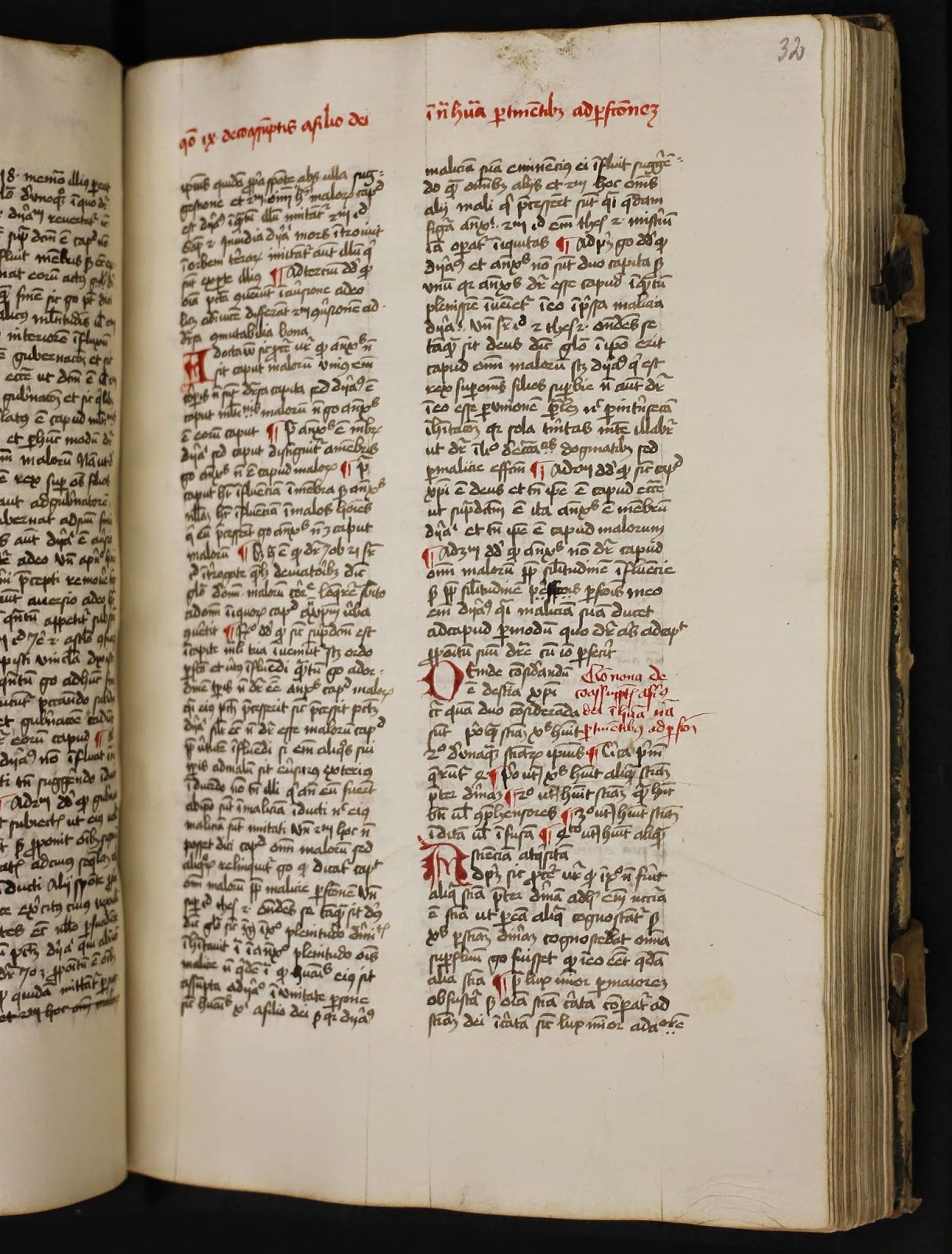
With these words, Thomas Aquinas concluded his brief introduction to his "Summa Theologica” (written between 1265-74), which remains one of the most important documents in the history of Christianity. In the text, Aquinas applied Aristotelian philosophy to Catholic theology, outlining a philosophical framework supporting Catholic belief. Brandeis is fortunate to hold a beautiful example of the third part (Tertia pars) of the "Summa." This part of Aquinas's text treats the subjects of the incarnation and life of Christ, explicating the Catholic mystery of the union of the divine and the human, before turning to a philosophical defense of the sacraments. This mid-15th century manuscript of the "Summa" contains 157 leaves written in a single hand, and spent several centuries in the library of a Carthusian monastery in Bavaria. It was donated to Brandeis by Peter H. Brandt [2].
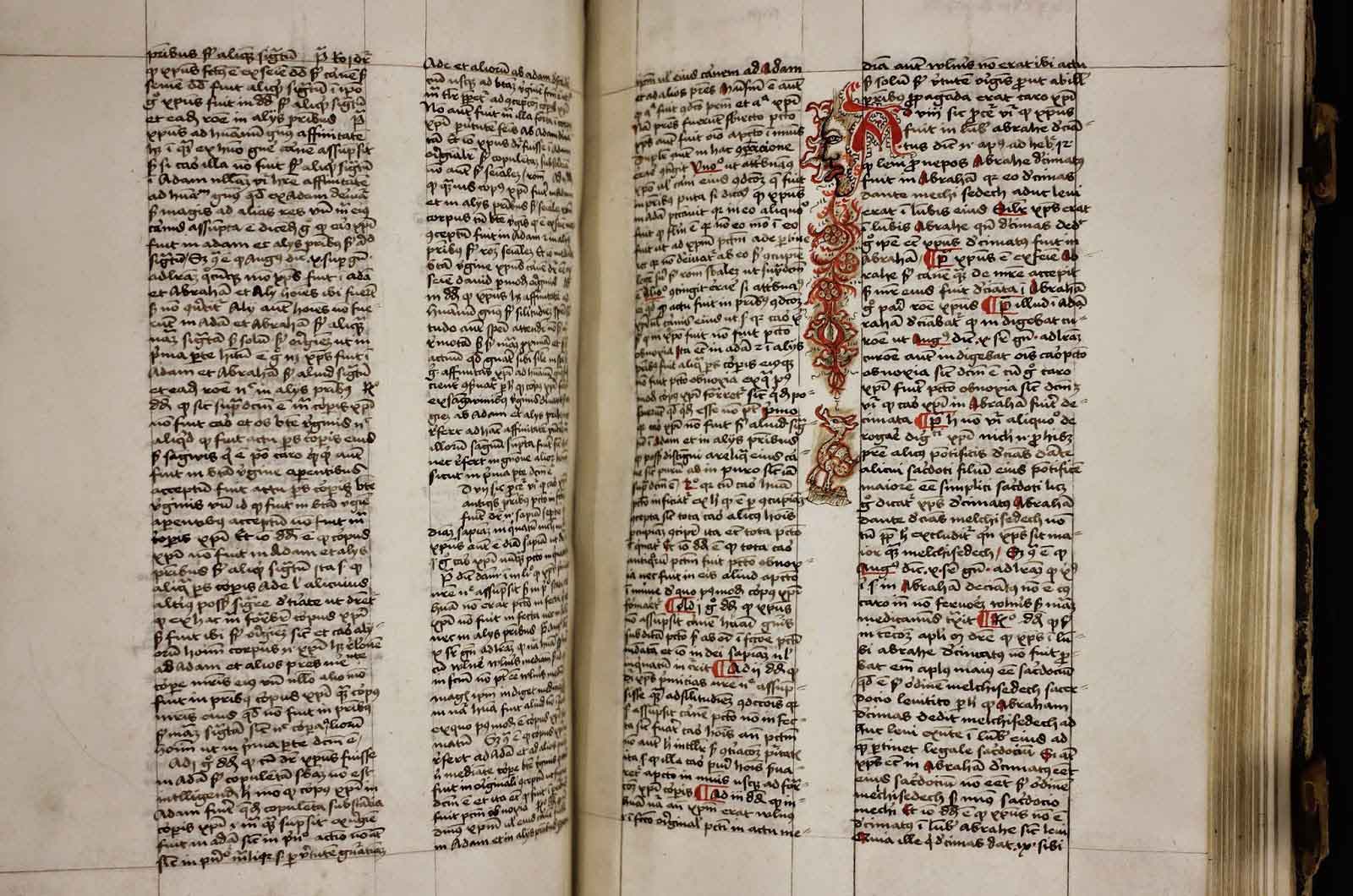 Aquinas (1225-74) was a Dominican friar and theologian who created the "Summa" to aid beginning theology students. His text is highly structured, a masterwork of the scholastic method. It is divided into questions, each of which is discussed through a series of objections to that question, followed by an answer to the question and answers to each objection. As it dealt with the whole of Catholic theology, this approach provided a philosophical, logical basis for Catholic belief, and represented a monumental shift in Catholic theology.
Aquinas (1225-74) was a Dominican friar and theologian who created the "Summa" to aid beginning theology students. His text is highly structured, a masterwork of the scholastic method. It is divided into questions, each of which is discussed through a series of objections to that question, followed by an answer to the question and answers to each objection. As it dealt with the whole of Catholic theology, this approach provided a philosophical, logical basis for Catholic belief, and represented a monumental shift in Catholic theology.
Aquinas, of course, did not exist in a vacuum. The general structure of his philosophy was Aristotelian; while much of the classical tradition had been largely lost in the West, it had been preserved in the Islamic world. Aristotelian thought in particular played an important role in the intellectual life of the Muslim world. There it had become a subject of study for numerous scholars, some of whom are cited in the "Summa" (most notably the Andalusian polymath Averroes, referred to as "the commentator" by Aquinas). Because of the novel intellectual exchanges taking place between the Christian and Muslim worlds occurring as a part of the Reconquista of Spain, Aquinas was able to take advantage of newly accessible Aristotelian literature and commentary.
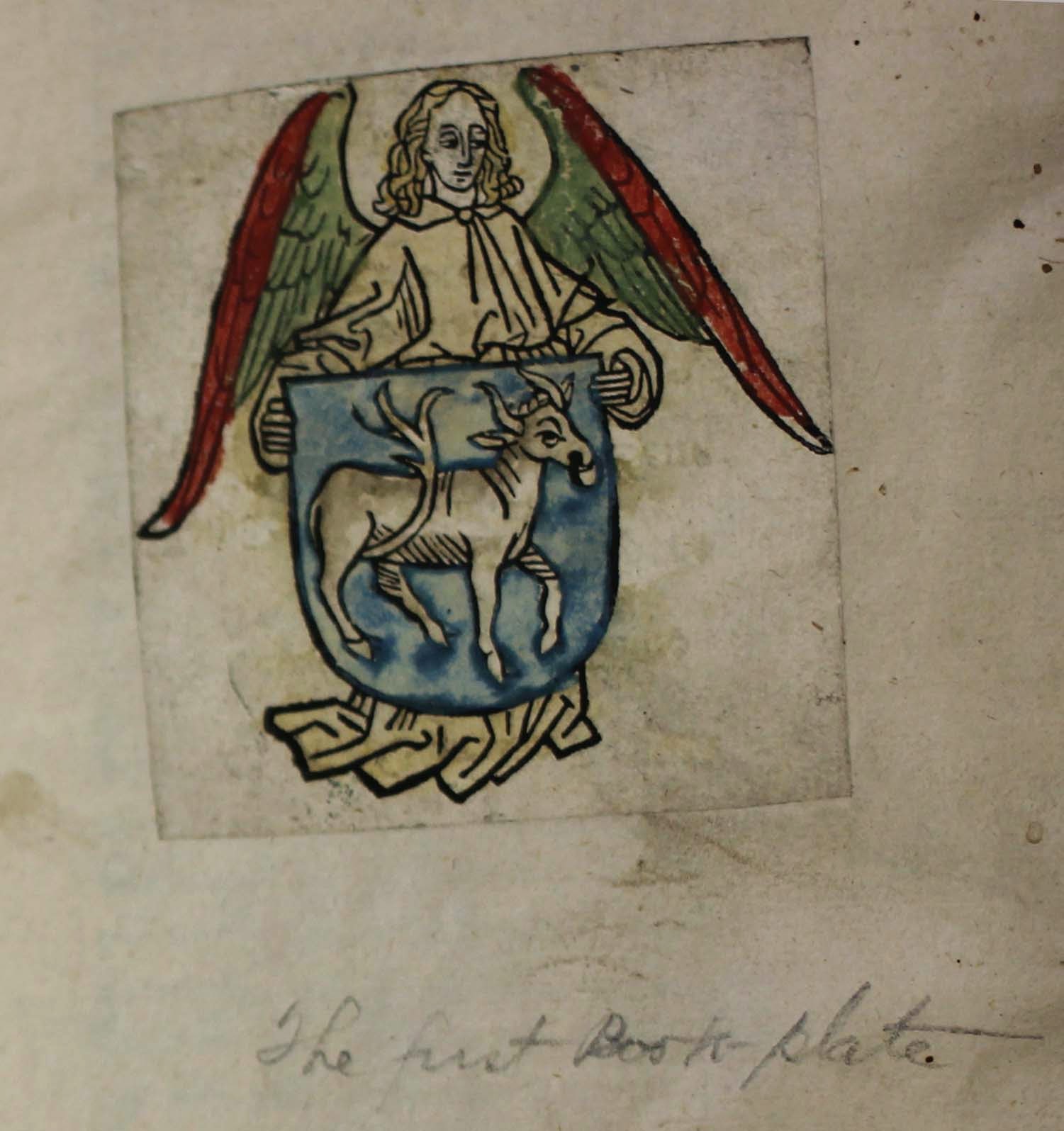 Compared with other theologians or philosophers, Aquinas' continued importance more than seven centuries after his death is extraordinary. In 1910, Pope Pius X underlined the continued importance of Aquinas to the Catholic Church: "St. Thomas perfected and augmented still further by the almost angelic quality of his intellect all this superb patrimony of wisdom which he inherited from his predecessors and applied it to prepare, illustrate and protect sacred doctrine in the minds of men… The reason is that the capital theses in the philosophy of St. Thomas are not to be placed in the category of opinions capable of being debated one way or another, but are to be considered as the foundations upon which the whole science of natural and divine things is based; if such principles are once removed or in any way impaired, it must necessarily follow that students of the sacred sciences will ultimately fail to perceive so much as the meaning of the words in which the dogmas of divine revelation are proposed by the magistracy of the Church" [3].
Compared with other theologians or philosophers, Aquinas' continued importance more than seven centuries after his death is extraordinary. In 1910, Pope Pius X underlined the continued importance of Aquinas to the Catholic Church: "St. Thomas perfected and augmented still further by the almost angelic quality of his intellect all this superb patrimony of wisdom which he inherited from his predecessors and applied it to prepare, illustrate and protect sacred doctrine in the minds of men… The reason is that the capital theses in the philosophy of St. Thomas are not to be placed in the category of opinions capable of being debated one way or another, but are to be considered as the foundations upon which the whole science of natural and divine things is based; if such principles are once removed or in any way impaired, it must necessarily follow that students of the sacred sciences will ultimately fail to perceive so much as the meaning of the words in which the dogmas of divine revelation are proposed by the magistracy of the Church" [3].
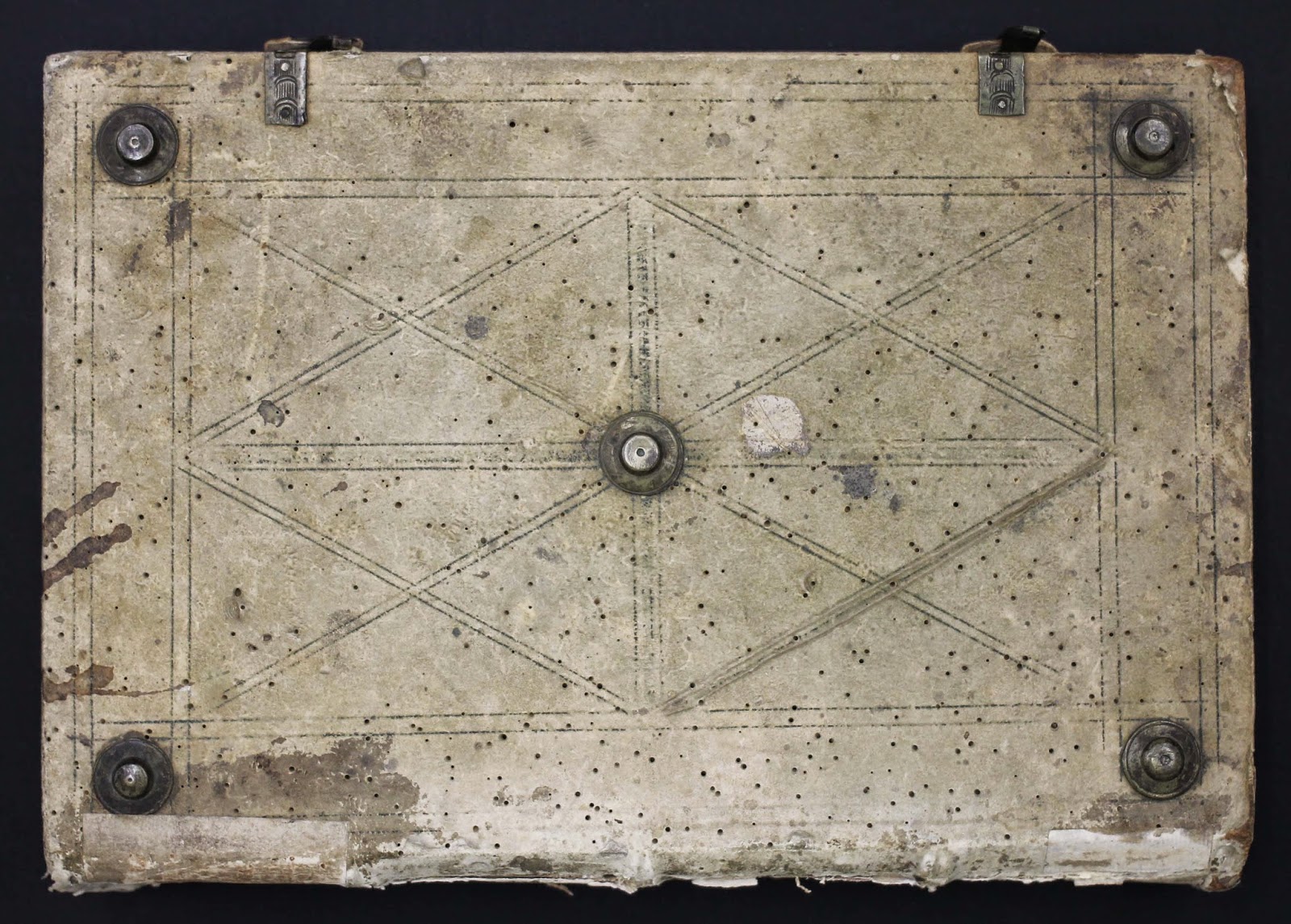 The "Summa" thus remains a keystone of both Christian theology and Western philosophy. In the words of a leading Thomist scholar, "the 'luck' of the 'Summa' was that it was a textbook… its durability can be explained by the generations of professors and students who read and reread it, pored over it, commented on it, and made it relevant, keeping it alive" [4]. Aquinas' proofs for the existence of God, termed the "Five Ways" (Quinque viae), were debated by such thinkers as Hume and Kant, and contemporary writers such as Richard Dawkins have been compelled to engage with and contest Aquinas' proofs in order to legitimize their own arguments about the place of Christianity in our time.
The "Summa" thus remains a keystone of both Christian theology and Western philosophy. In the words of a leading Thomist scholar, "the 'luck' of the 'Summa' was that it was a textbook… its durability can be explained by the generations of professors and students who read and reread it, pored over it, commented on it, and made it relevant, keeping it alive" [4]. Aquinas' proofs for the existence of God, termed the "Five Ways" (Quinque viae), were debated by such thinkers as Hume and Kant, and contemporary writers such as Richard Dawkins have been compelled to engage with and contest Aquinas' proofs in order to legitimize their own arguments about the place of Christianity in our time.
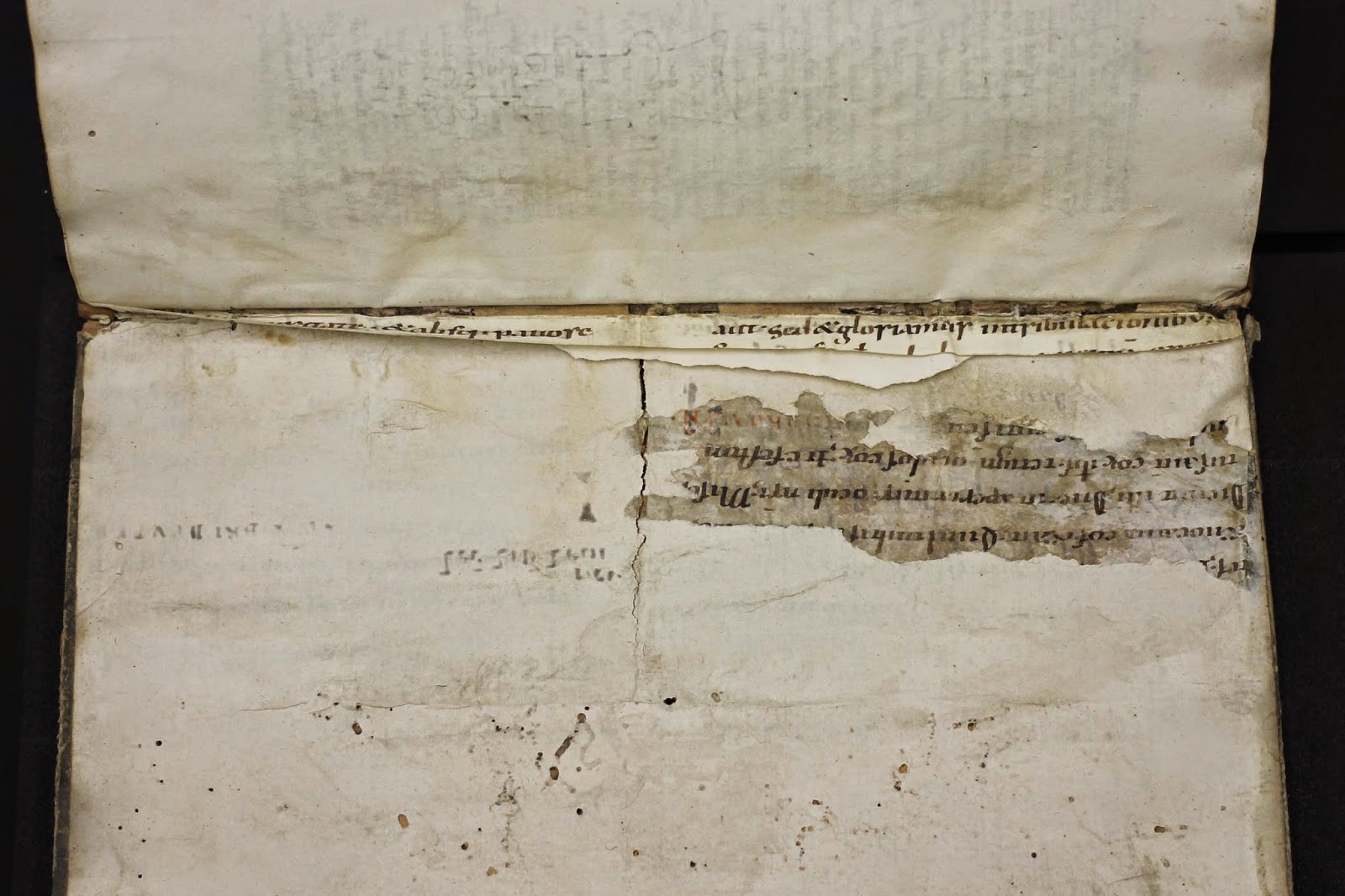 Aquinas, through his "Summa," re-conceptualized Christian theology in Europe by connecting Christianity and classical thought. His popularity created a new school of philosophical inquiry, called Thomism. In the Western tradition, he outlined the notion of a "just war” and advanced novel arguments about the meaning and purpose of human life — all intertwined with and based in his Catholicism. The “Summa” was a revolution in European thought and can be easily viewed at the Robert D. Farber University Archives and Special Collections, as a part of the pre-1850 Western manuscripts collection, alongside several different editions of the Book of Hours, a biography of Pope Alexander VI (Rodrigo Borgia), and a number of stunningly illuminated medieval manuscripts.
Aquinas, through his "Summa," re-conceptualized Christian theology in Europe by connecting Christianity and classical thought. His popularity created a new school of philosophical inquiry, called Thomism. In the Western tradition, he outlined the notion of a "just war” and advanced novel arguments about the meaning and purpose of human life — all intertwined with and based in his Catholicism. The “Summa” was a revolution in European thought and can be easily viewed at the Robert D. Farber University Archives and Special Collections, as a part of the pre-1850 Western manuscripts collection, alongside several different editions of the Book of Hours, a biography of Pope Alexander VI (Rodrigo Borgia), and a number of stunningly illuminated medieval manuscripts.
Notes
- For English translations of the Summa, see Summa Theologiae, translated by Fathers of the English Dominican Province or Project Gutenberg's Summa Theologica
- For a detailed description of the manuscript and its history, see the Spotlight by Adam Rutledge, “The First Bookplate”
- Pope Pius X, Doctoris Angelici, 29 June 1914.
- Torrell, Jean-Pierre. “Aquinas’ Summa: Background, Structure, and Reception.” Washington, D.C.: Catholic University of America Press, 2005, p. 132.